Working with the Port of Seattle during a Washington Sea Grant Fellowship
Selected as the 2022–2023 Washington Sea Grant Keystone Fellow, Ashley Townes spent a year working with the Port of Seattle’s maritime habitat team on advancing the development and implementation of innovative habitat restoration projects including kelp research, fish sampling with underwater remote operated vehicles (ROVs) and 360-degree cameras, and bankline monitoring to survey the condition and character of shorelines at port facilities in the Lake Washington Ship Canal, Shilshole Bay, Elliott Bay, the East and West waterways and the Duwamish Waterway. Also a PhD student in SAFS, we spoke to Ashley about her experience as a WSG Keystone Fellow, the knowledge and skills she developed throughout the experience, and how it fits in with her future career plans.
How did you get involved with the Washington Sea Grant Keystone Fellowship?
As a PhD student in SAFS, I had the amazing opportunity to be a teaching assistant and graduate student advisor with the Ronald E. McNair Post-Baccalaureate Achievement Program. This program is nationally recognized for its commitment to helping first-generation, low-income, and/or minority undergraduate students pursue PhD studies through research and scholarly activities. For two years, I was part of this wonderful team, assisting and working with students from diverse fields like molecular biology, atmospheric and oceanic sciences, astrophysics, philosophy, and dance.
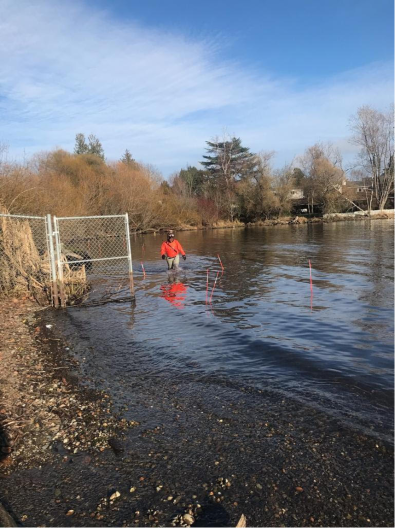
In my second year with the McNair program, I stumbled upon the Washington Sea Grant Keystone Fellowship. Intrigued, I clicked on the ad and found that the fellowship, and the host organization for that year which was the Port of Seattle, aligned quite well with my research interest and past professional experiences. It seemed like an ideal step for my career, especially since I am considering similar work post-graduation. The fellowship presented a unique chance to dig deep into the workings of a special purpose government and gain insights into the maritime industry sector.
In grad school, I’ve noticed there’s not a lot of talk about the different career options out there. Sure, a lot of us are aiming for that dream professor role or a spot at NOAA, which is awesome. But there are so many other amazing places to work, especially if you’re into fish ecology and aquatic science.
Take The Nature Conservancy, for instance, or King County Department of Natural Resources. There’s also the Department of Ecology and even the Port of Seattle. These organizations are all doing really important work and research in the fields of ecology, marine biology, fisheries, environmental science, natural resource management and they’re on the lookout for folks with both Masters and PhDs.
What’s cool about these places is that they value fresh perspectives. They’re not just looking for people to fill roles; they want someone who can bring new ideas and approaches to their projects. It’s a chance to make a real impact and see your education put to good use in some innovative and meaningful ways.
So, while the traditional paths are great, it’s worth exploring these other options too. You might find a career that not only fits your skills but also lets you contribute in ways you hadn’t thought of before. Plus, diversifying our career paths can only be good for the field in order to effectively tackle complex environmental challenges, including climate change.
Any thoughts for other students wanting to experience more research opportunities?
For students seeking to enhance their involvement in research opportunities, internships, and job experiences, a proactive and exploratory approach is key. Start by subscribing to newsletters from organizations that pique your interest. This can provide valuable insights into their activities and the nature of their work. Also, look into various blogs published by these organizations. This not only broadens your understanding of their operations but also helps you identify areas that resonate with your interests and strengths. Reflect on your skills, preferences, and the type of work that excites you. Consider feedback you’ve received about your work style and contributions; this can guide you in pinpointing potential career paths and skill areas to develop.
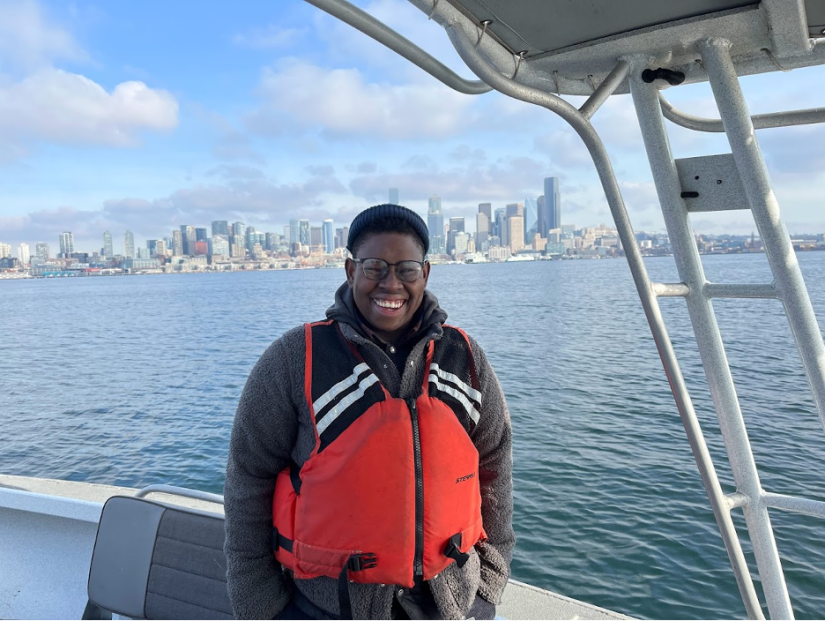
One practical step is to actively seek out mentors or advisors in your field of interest. These could be professors, industry professionals, or even senior students. They can provide invaluable guidance, help you identify opportunities, and sometimes even offer direct referrals. Remember, a simple conversation can open doors! Additionally, don’t hesitate to apply for positions, even if you feel you don’t meet all the criteria.
Furthermore, consider volunteering for research projects or internships, even if they are unpaid. The experience and connections you gain can be priceless. These experiences offer insider perspectives on various fields, including unique research opportunities, fellowships, and internships that may be available. These settings also provide a platform to network with professionals and peers, which can lead to valuable connections and insights into different career paths.
Lastly, be proactive in creating opportunities. If you can’t find an existing research project or internship that excites you, propose your own. Many professors appreciate initiative and may be willing to supervise an independent project or study.
Remember, the journey into research and professional experiences is as much about exploring your interests and building relationships as it is about acquiring specific skills. Be open, be curious, and don’t be afraid to step out of your comfort zone!
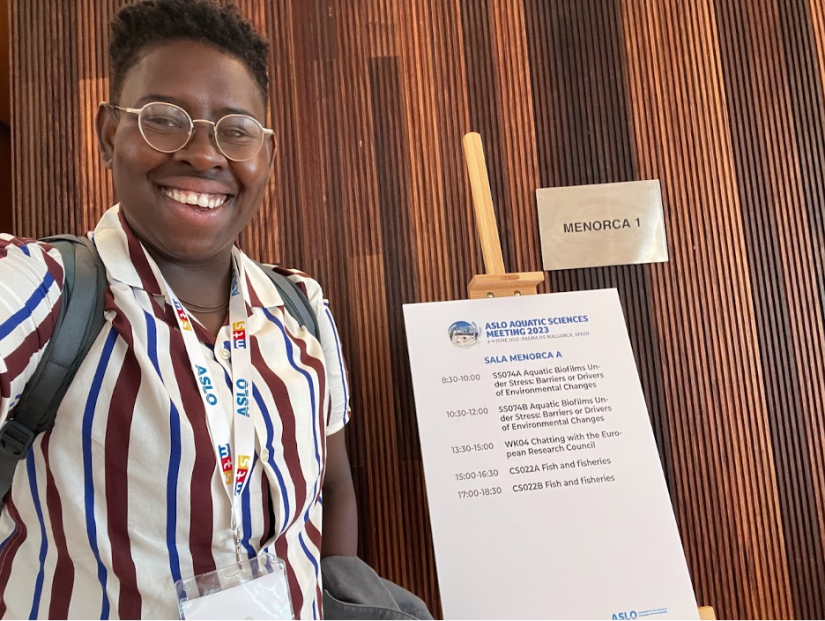
How has the fellowship experience contributed to your personal and professional growth?
During my time in the fellowship, I’ve built a rich network of connections, from inspiring mentors and industry experts to like-minded peers. These connections have not only enriched my understanding of the field but also opened doors to future collaborations and valuable advice. Taking on new challenges and responsibilities has significantly boosted my confidence, fostering a sense of self-reliance and a proactive approach in my career as well.
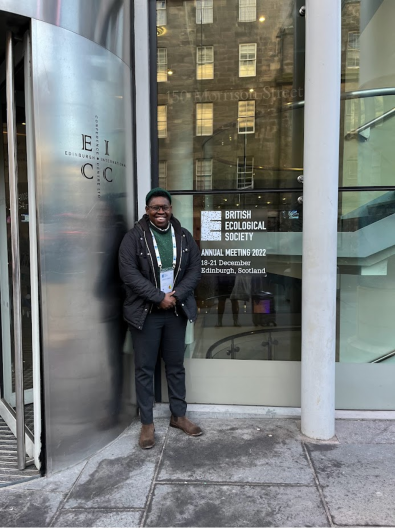
On a personal level, the experience has enhanced my adaptability, resilience, and cultural awareness. It has also strengthened my belief in my rightful place in this field and my ability to make important contributions. One of the most rewarding aspects was having my innovative ideas valued and leading small teams. Specifically, the fellowship offered me hands-on opportunities to apply my theoretical knowledge to real-world situations, deepening my understanding of salmon ecology in urban environments. This practical experience has been instrumental in shaping my long-term career goals as a research fish ecologist, allowing me to see the direct impact of my work in the field.
I would also like to highlight the terrific professional development opportunities that came with the Keystone Fellowship. The financial support provided to us fellows greatly empowered me to discover my own voice and refine my public speaking skills. In the past year, I had the privilege of presenting my doctoral research at three international conferences (Scotland, Spain and England), in addition to discussing my fellowship endeavors. Moreover, I actively engaged in three national conferences, substantially enriching my knowledge across diverse subject domains while fostering connections with fellow professionals. During these experiences, I not only got the chance to meet influential people like President April Croxton of the American Fisheries Society and esteemed marine biologist and scholar Daniel Pauly at the ASLO Aquatic Meeting in Spain, but also had a significant encounter during my research presentation in England. It was there that I was interviewed and featured in a video called “Reasons for Optimism.” After my oral presentation, I was approached by Nicholas Kevin Dulvy, a distinguished marine ecologist and multi-award winner. His unexpected invitation to join him and his colleagues at Simon Fraser University for discussions about my future left me profoundly amazed, deeply inspired, and honored.
What experiences were the most satisfying for you while working as a fellow?
Reflecting on my time as a fellow, some moments truly stand out. The highlight, without a doubt, was spearheading a pilot study research project. The study entailed carrying out a survey to evaluate the juvenile fish population, specifically salmon in the recently rehabilitated Duwamish River People’s Park, a riverside marsh in South Seattle The sense of achievement I felt when it succeeded was unparalleled, and I consider this project a major achievement in my career, alongside other significant works.
Being part of the Port of Seattle’s roundtable discussions was another enriching experience. There, I wasn’t just a bystander; I actively engaged in meaningful conversations, contributing ideas and learning from others. These discussions were eye-openers, broadening my perspective on various environmental issues.
What also added immense value to my fellowship was the opportunity to network with experts in environmental sustainability. Interacting with these professionals wasn’t just about exchanging business cards; it was about sharing a passion and vision for a greener future. Their unique insights and experiences not only helped me expand my professional circle but also deepened my understanding and enthusiasm for our collective mission.
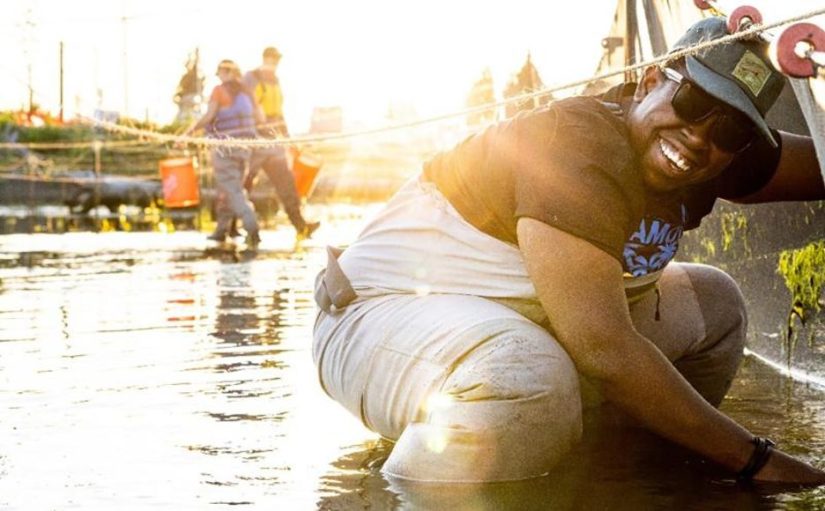
What kind of skills did you use from your studies during the experience?
Participating in this fellowship was a transformative experience, allowing me to bring the theoretical knowledge and research expertise I’ve cultivated during my PhD studies at SAFS into the dynamic realm of practical application. It was here that I truly refined my skill set, integrating advanced quantitative methods and research strategies into my professional toolkit. This opportunity enabled me into a real-world challenge: the restoration of salmon habitats.
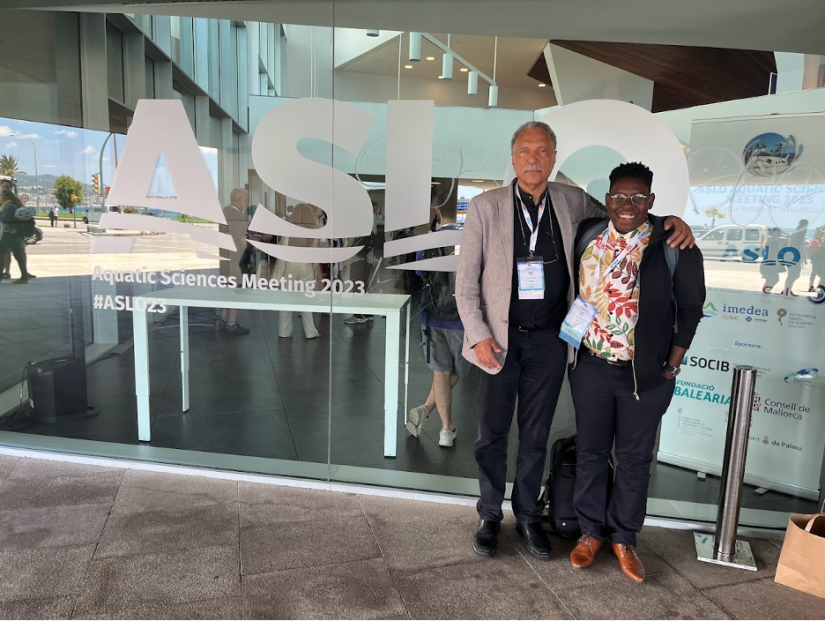
A standout moment was the experimental design and execution of my pilot study. For sampling, I primarily used a small ROV and a 360-degree camera. The two main objectives of the study were to: 1) assess the feasibility and effectiveness of using cutting-edge technology, including a 360-degree video camera and ROV within the context of a restored shallow marsh environment; and 2) determine whether the 360-degree video camera can effectively capture the presence of fish within the restored marsh environment, and to use the camera’s AI software for species identification and counting. This included a thorough evaluation of the camera’s capability to capture clear visual data. This application of high-tech technology has returned inspiring results, even capturing the movements of juvenile salmon as they venture into the marsh area of DRPP during high tide. I knew this project was a risk but in my heart, I also knew, regardless of the outcome, this process would yield valuable insights into the potential of various sophisticated technologies not commonly used in fish monitoring. As I was gearing up to implement the study, two quotes frequently came to mind, giving me a boost of confidence and the belief in my own capabilities:
“New innovations are born from creative thinking. Thus, it’s essential to nurture and support such creativity in every possible way.” – attributed to George Washington Carver.
“Through keen observation and thoughtful reflection, one discovers their path. So, it’s vital to persistently explore and investigate.” – credited to Claude Monet.
These words genuinely resonated with me, reinforcing my resolve and guiding me forward.
Leveraging skills like data collection and analysis, creative thinking, and report writing, which I honed in my academic journey, I was able to guide this project from its inception to its successful implementation. This process was not just about applying textbook theories; it involved innovating solutions and adapting to on-the-ground realities as well.
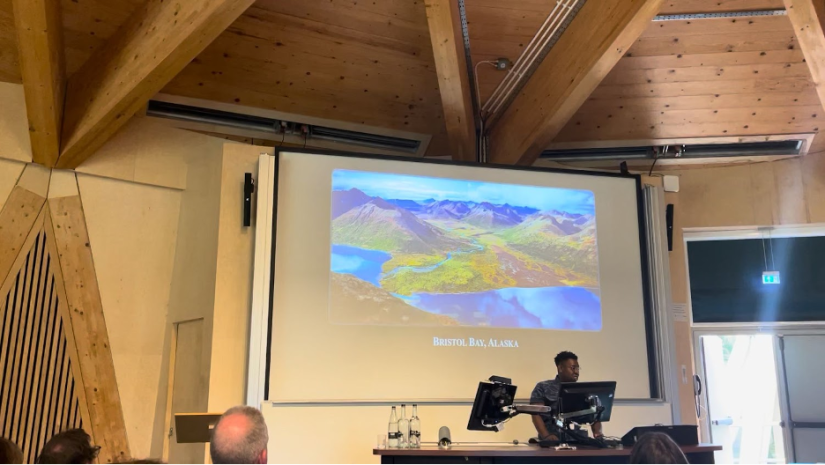
Moreover, the fellowship was a platform for me to enhance my other competencies, notably in technical writing, computer programming, and graph development. These skills were crucial in creating impactful visual and written narratives that underpinned the success of my project. They also significantly contributed to leading and advancing the department’s Sustainable Shoreline Program’s monitoring and reporting this year. The data and insights I generated played a pivotal role in advancing our team’s effort to highlight the effectiveness of a newly restored habitat along the Duwamish River and significantly contributed to the department’s broader mission of rehabilitating salmon ecosystems as well. Overall, this experience was instrumental in my growth as a scientist, providing me with a richer, more nuanced understanding of habitat restoration.
How was this fellowship useful for your future?
The fellowship program significantly honed my expertise in several key areas. Firstly, I developed proficiency in project management and logical coordination, essential skills for effective leadership and team collaboration. My engagement with spatial analysis deepened through learning ArcGIS on the job, which notably improved my ability to analyze and interpret geographical data, a critical skill in environmental research. I also gained more fieldwork experience, including the use of new surveying applications, conducting fish sampling, and employing a fyke net for ecological research. The fellowship also underscored the value of independent work, encouraging me to become more resourceful and proactive.
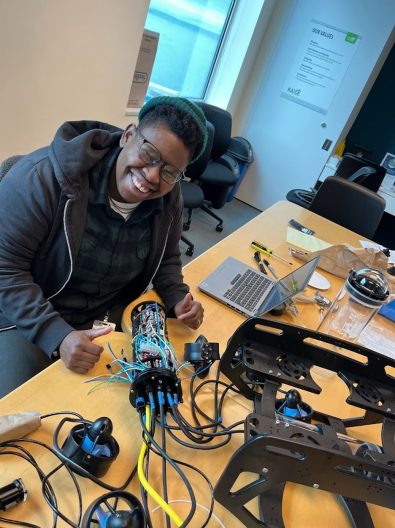
From an academic perspective, the program offered an immersive exploration into shoreline sustainable development. I gained in-depth knowledge of mitigation banking and blue carbon sequestration, moving beyond theory to grasp detailed aspects such as sector-specific terminology, methods of qualitative and quantitative analysis, and identifying success metrics in sustainable practices. This comprehensive understanding has significantly broadened my perspective on environmental sustainability.
These acquired skills and knowledge are not only pivotal for my imminent career post-Ph.D., but they also align with the needs of future employers in the environmental and sustainability sectors. Possessing these competencies will enhance my job prospects, making me a valuable asset to organizations dedicated to environmental conservation and sustainable development.